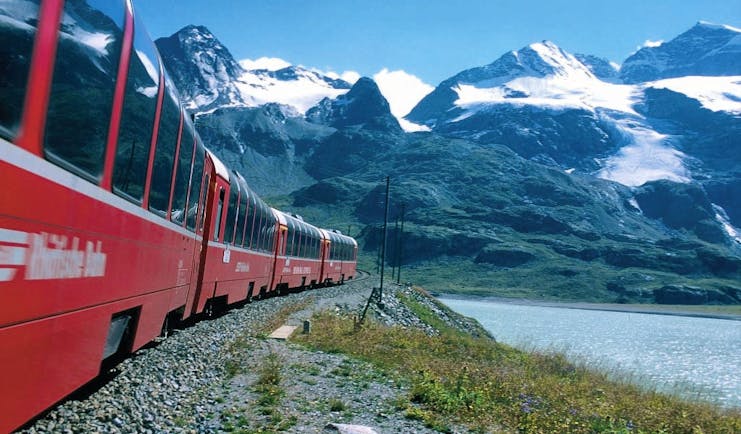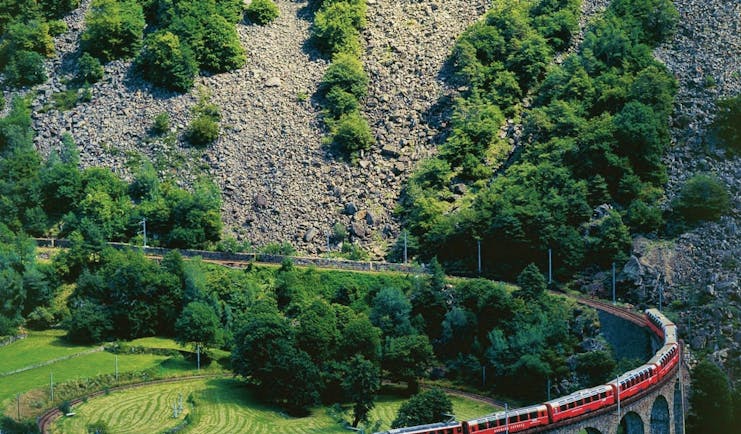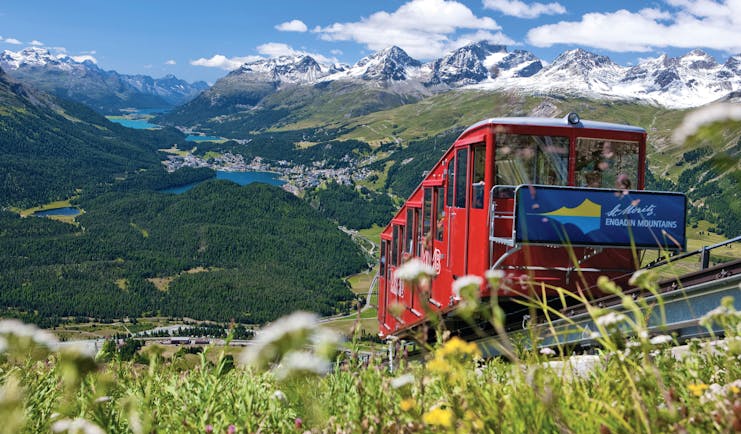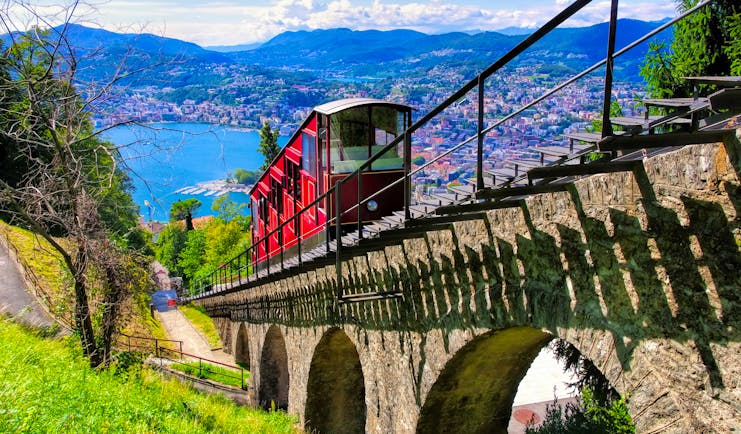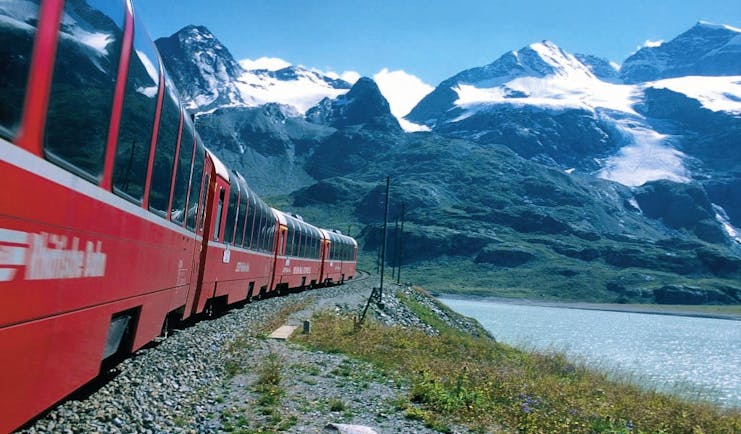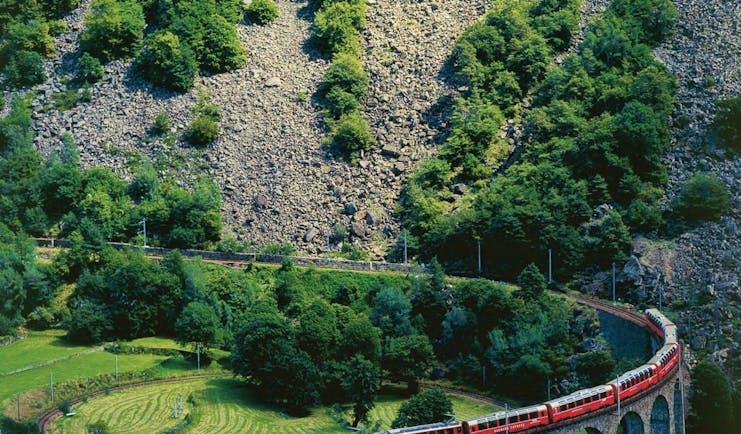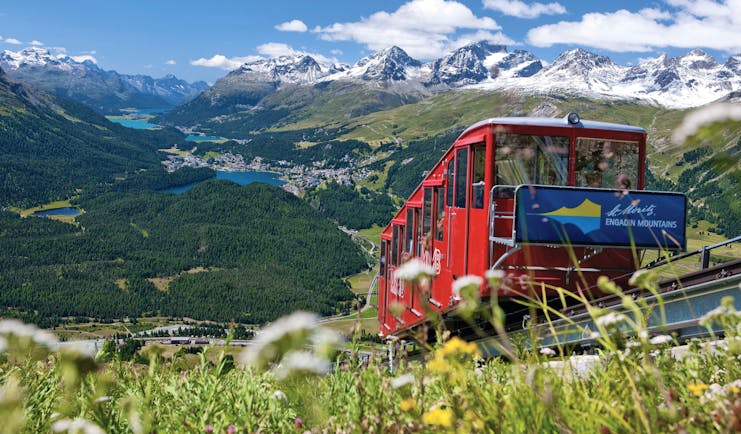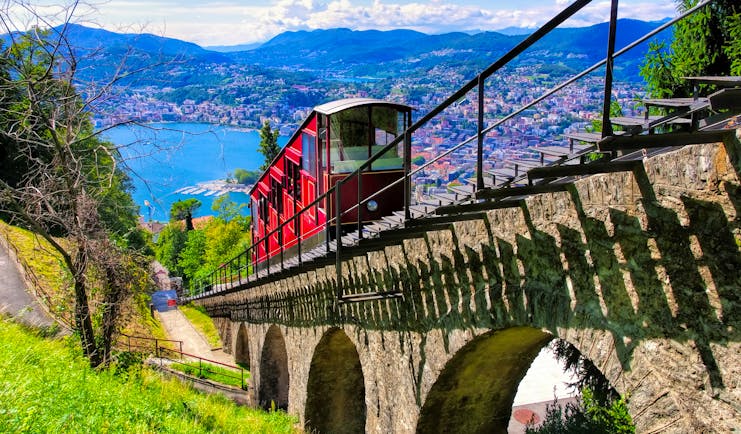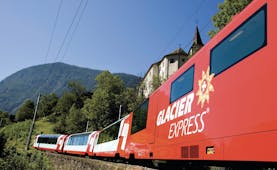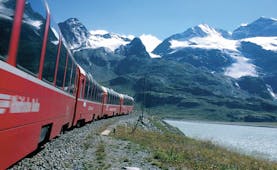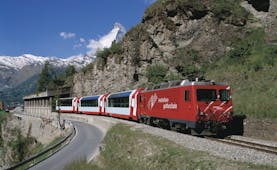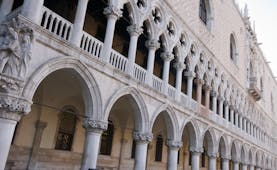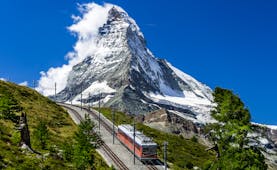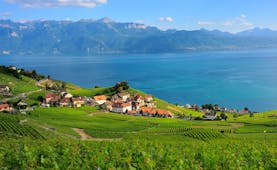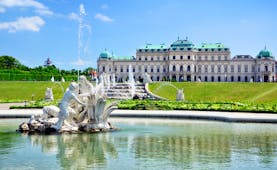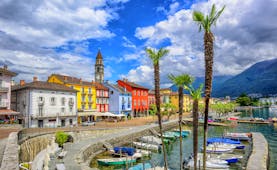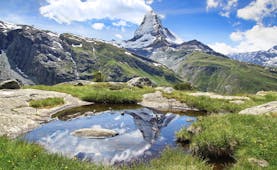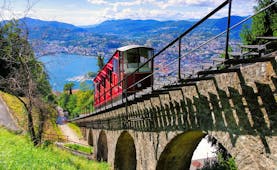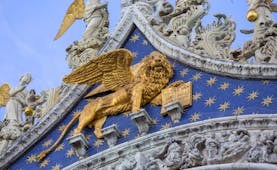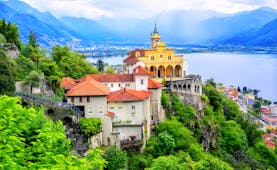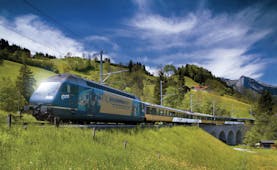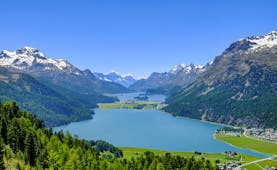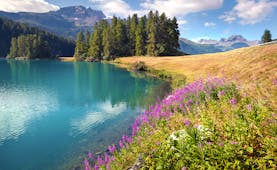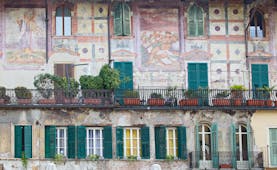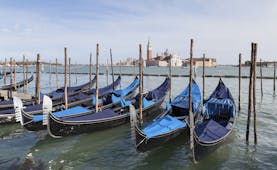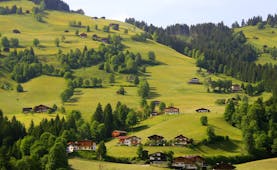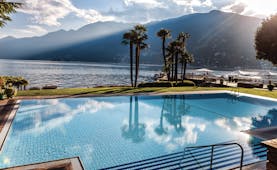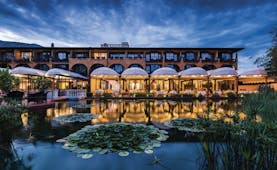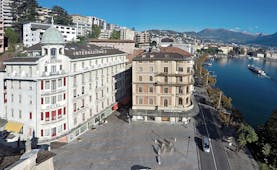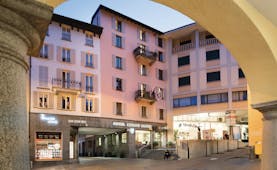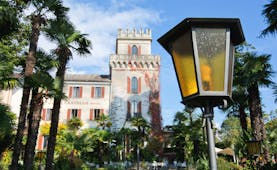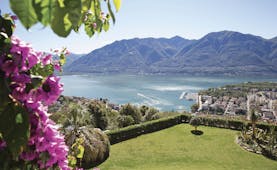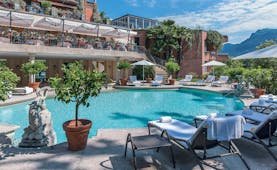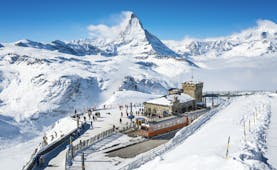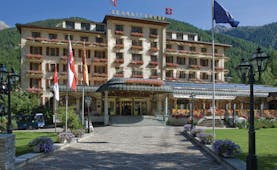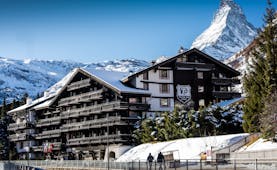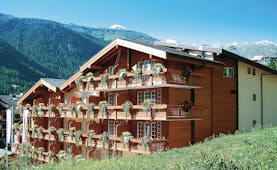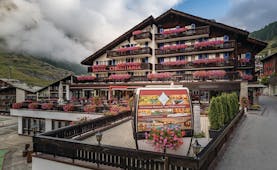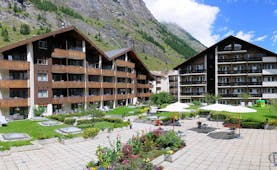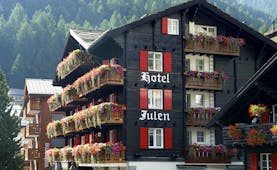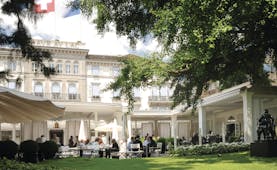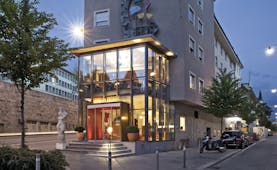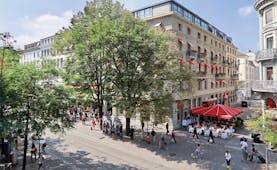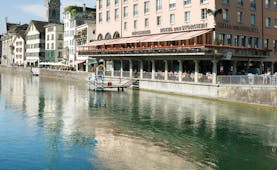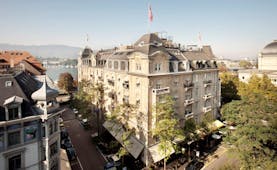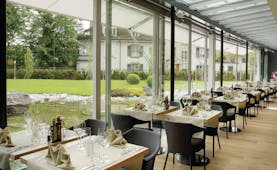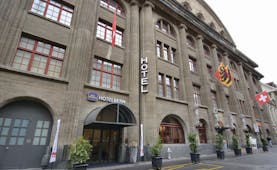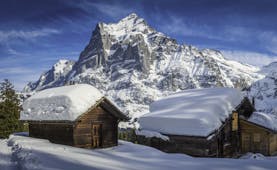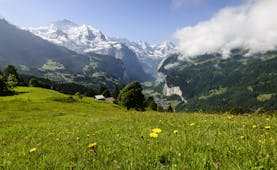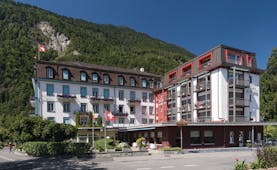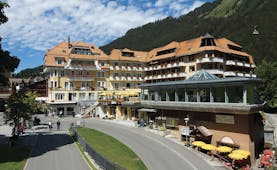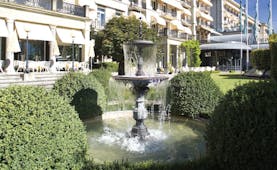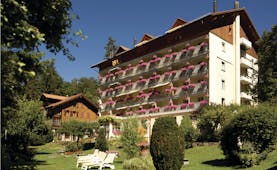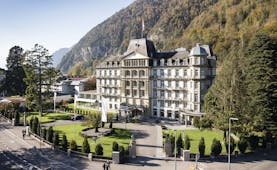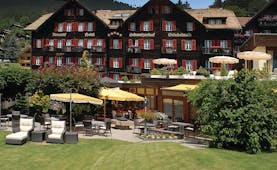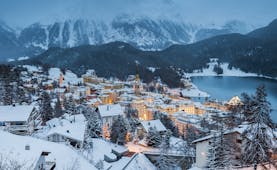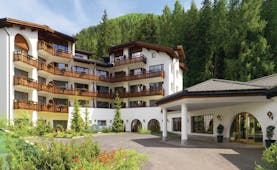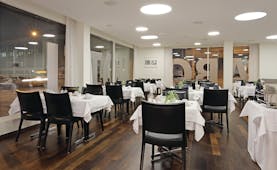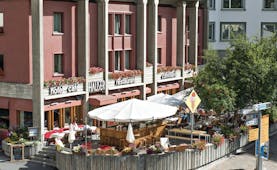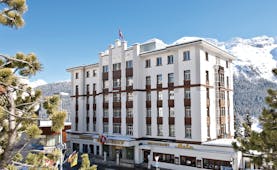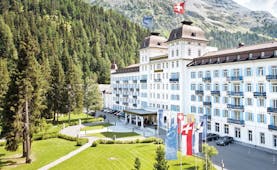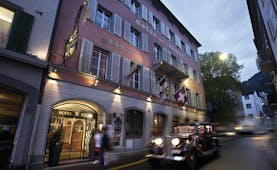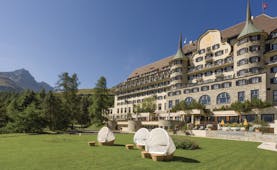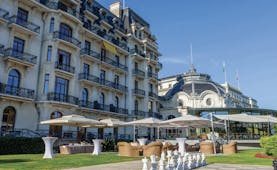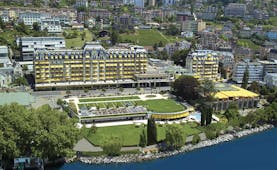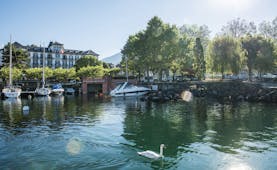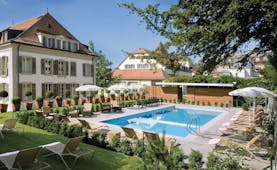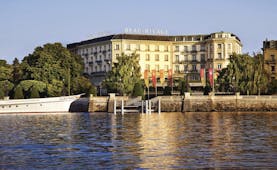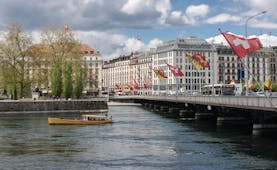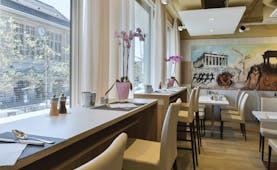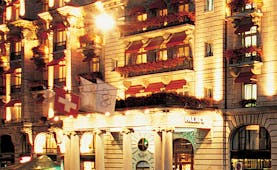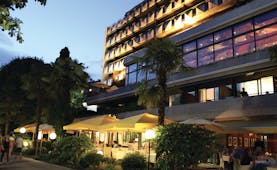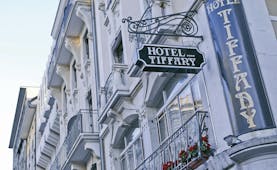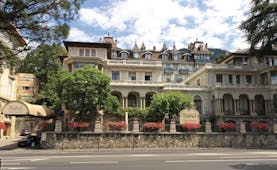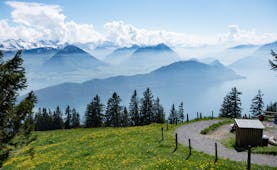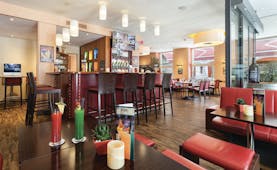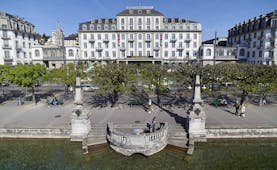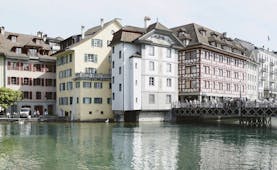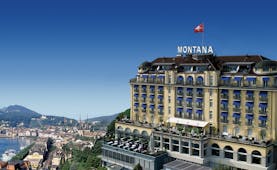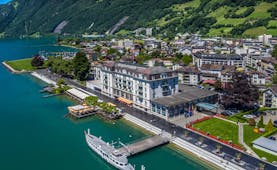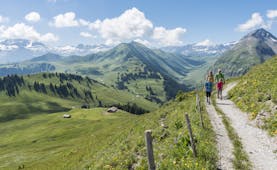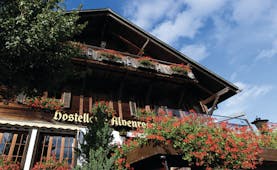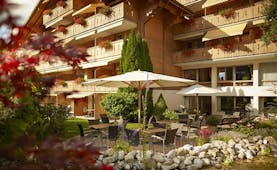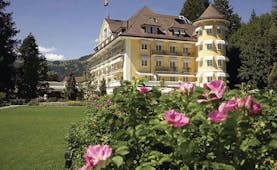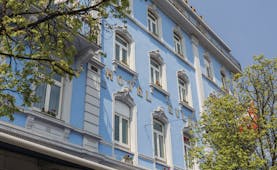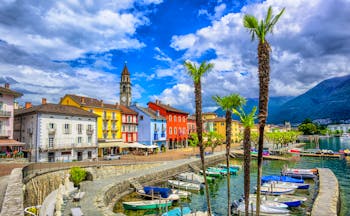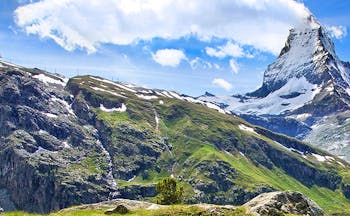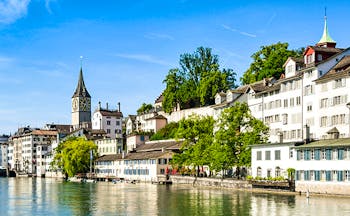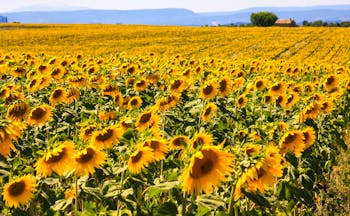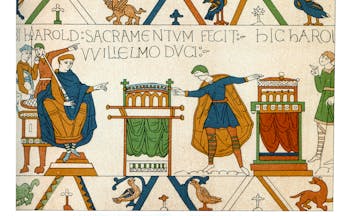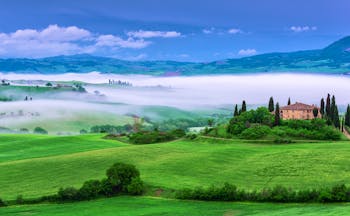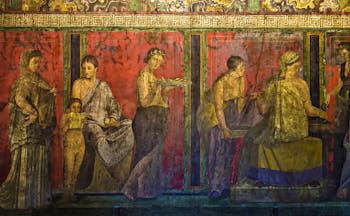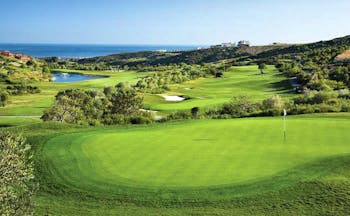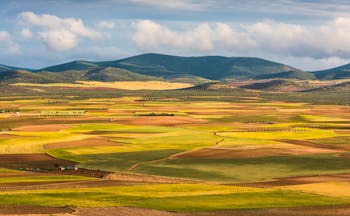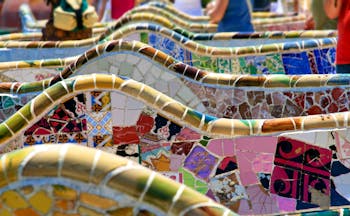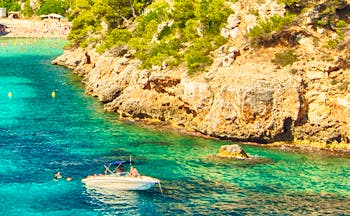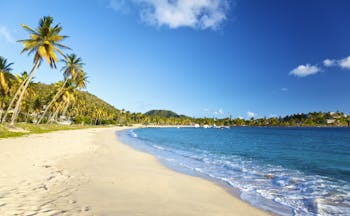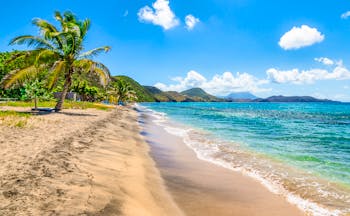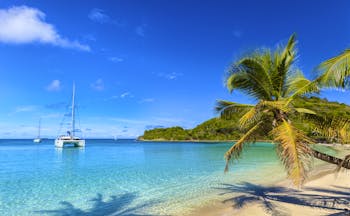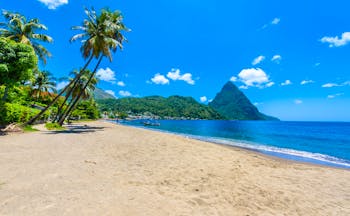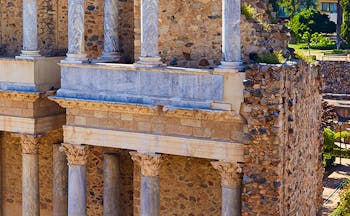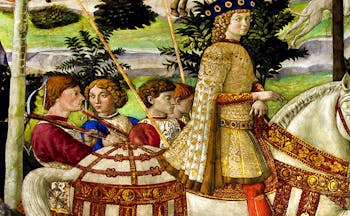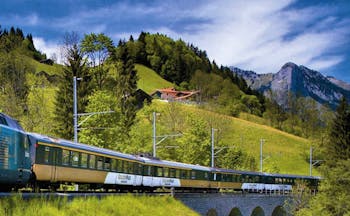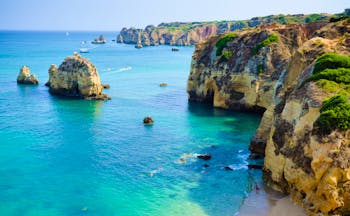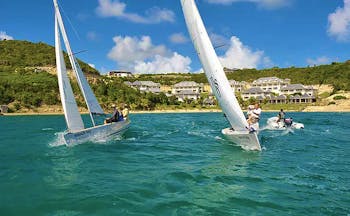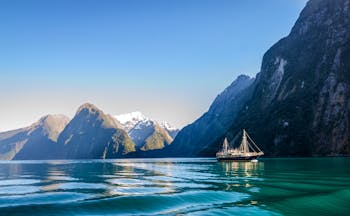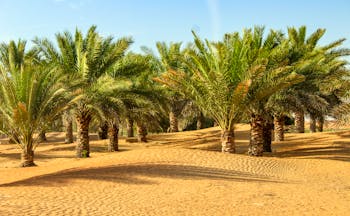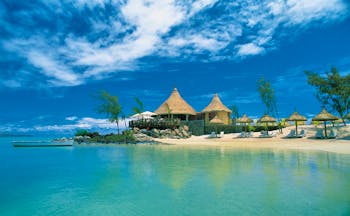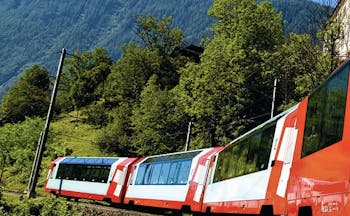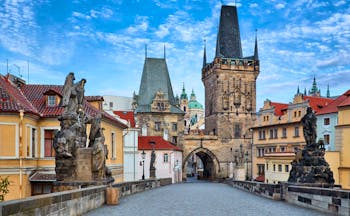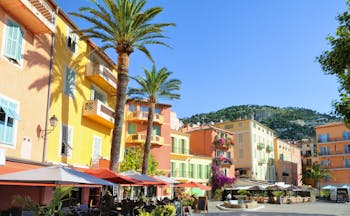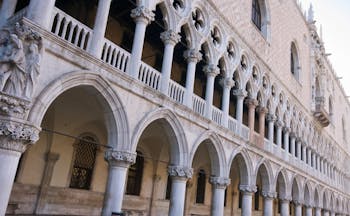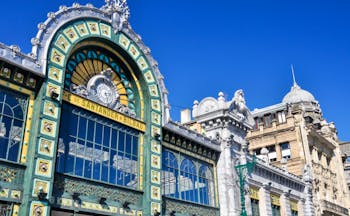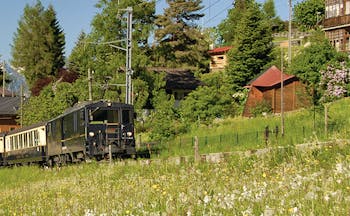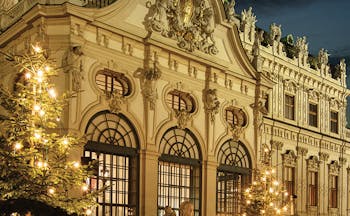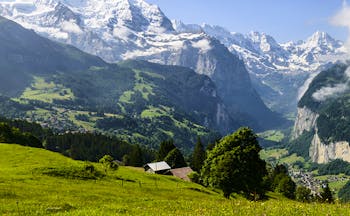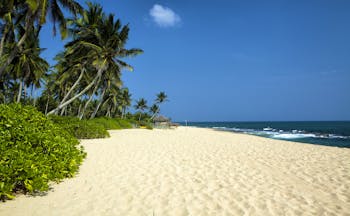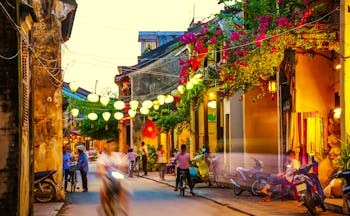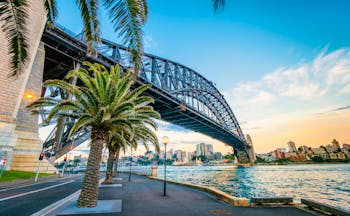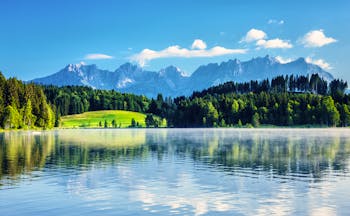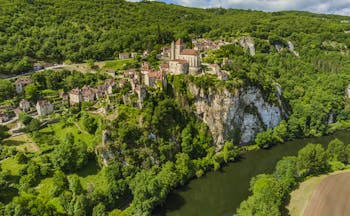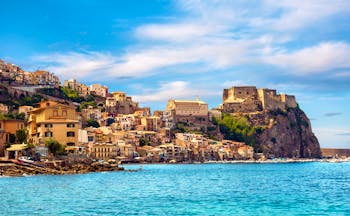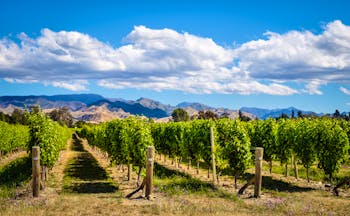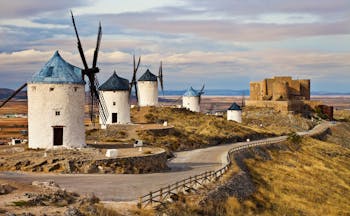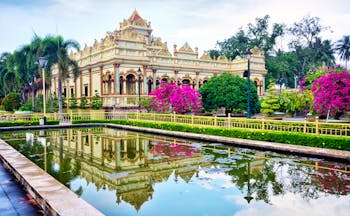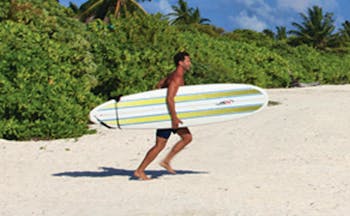Luxury Swiss iconic rail touring holiday on the Bernina Express
The Bernina Express journey is the focal point of this holiday, which is preceded by a night in Zurich and followed by a stay in Lugano at the end of the holiday. The Bernina Express carriages are perhaps the most distinctive of all the iconic rail journeys. The panoramic windows stretch up onto the roof to allow passengers to admire the view from the lakes and meadows to the highest peaks and glaciers. The track itself features many twists and turns, navigating 360-degree revolutions, tackling dramatic changes in altitudes, and disappearing into the formidable rock faces of mountains.
Highlights
Chur • Tiefencastel • Davos • Filisur • Bergun • Samedan • St Moritz • Pontresina • Ospizio Bernina • Alp Grum • Poschiavo • Le Prese • Tirano • Lugano
Day by day
Begin this touring holiday with a flight to Zurich or by taking Eurostar to Paris and then on to Zurich by TGV. Stay in Zurich for one night. Though the flight will drastically cut travelling times, enabling an earlier arrival, we do recommend taking the scenic railway trip via Paris and Basel.
Board the train to St Moritz in the morning, arriving about 3 and a half hours’ later. This rail journey takes you first along the southern curve of Lake Zurich, passing through Horgen, Wadenswil, and heading inland onto the vast plains of the valley at Lachen. From here, you carry on towards the undulating green shores of Lake Walen, Weesen, and Walenstadt. Follow the paths of the valleys as you continue southeast to the spa town of Bad Ragaz and cross the border into the canton of Grisons at Landquart. Change trains at Chur, Switzerland’s oldest city, and join the pathway of the Bernina Express. You travel through the Ruinaulta, or Rhine Gorge, taking in one of the most picturesque landscapes in the Alps. The winding river changes altitude beside the railway tracks, passing sheer white cliffs, hilltop towers, and slinking under arched viaducts. The first stop on the journey is at Tiefencastel, which has ochre-fronted houses, stunning, narrow stone bridges, and is crowned by a solitary tower. The line splits here, bringing passengers to join the train from Davos. Davos is beautiful both when covered with snow and when graced with summer sunlight. The Bernina Express will then take you through the Domleschg Region, the area with the most castles and palaces in Switzerland. One of the highlights of this stretch is the towering curve of the Landwasser viaduct, built in 1901. This route takes you on through Filisur towards Bergun, where you may wish to stop to visit the Bergun Railway Village, home to the Albula Railway Museum and the Railway Adventure Trail. Otherwise, ensure you take in the sight of the crystal-clear blue waters that run in the rivers. From Bergun, the train continues on to Samedan, a small town hemmed in by lakes and the lower verdant banks of the mountains. Hurtle on towards St Moritz, passing the Cresta Run in Celerina, one of the St Moritz area’s most famous attributes. You stay in St Moritz at your choice of hotel for two nights.
The dry, clear climate of the Upper Engadine Valley makes St Moritz the perfect winter sports resort, but also well-suited to long rambles, walks, and hikes across the undulating mountainside. Perhaps spend an hour or two wandering around the lake shore, admiring the mountains and the waterside, and uncovering shady groves, trickling waterfalls, and hidden caves. It is also possible to navigate higher up the mountains by rail, reaching the vantage points on the Piz Corvatsch and Chantarella at the top of the steep track. At Corviglia, a cable car takes you up to the Suvretta Mountain’s most popular viewing point. Those looking for more thrilling and active experiences could partake in the water sports at Lake St Moritz or Lake Sils, or across at the high-altitude Lake Silvaplana, known for being windy.
From St Moritz you board the Bernina Express again. Less than 10km from St Moritz is Pontresina, the next stop on the rail route. It sits at the entrance to the Val Bernina on a sloping mountainside terrace, which adds to the village’s quaint majesty. The next leg of the journey, however, passes two exceptional sights: the Montebello Curve and the Morteratsch Glacier. The curve itself has a minimum radius of 45m, turning a total of 180 degrees, and remains one of the most photographed sections of the track. After this brief descent, the Bernina Express gains higher ground; the highest ground, in fact, of the Rhaetian Railway, reaching 2253m above sea level at Ospizio Bernina, your next stop. This secluded station is a beautiful sight with soft light stone walls and distinctive red shutters on its windows. From here, move on to perhaps the most unique stop on the Bernina Express route: Alp Grum. This restaurant is the only restaurant that is exclusively accessed by rail. As a result, the dining experience is equally exclusive, with unrivalled views of the Val Poschiavo all the way to the Bergamo Alps. If you wish to dine here this is best done on a day trip from St Moritz. The journey then takes you on to Poschiavo itself, a town surrounded by rich, deep green vegetation, with a serene lake on one side. Then, the train will stop in Le Prese, a small village captured in a bubble of peace and quiet. Next, the Bernina Express takes you through to Brusio. After coming along the mountainside, the track spirals back on itself, allowing passengers plenty of time to take in the views before they descend under the viaduct they have just passed over. The Bernina Railway ends across the Italian border in Tirano, after passing orchards and vineyards, where the influences of Italy can already be seen in the architecture of the townhouses lining the riverside. Disembark here, pausing for lunch depending on the time of the train you have chosen, and then board the dedicated Bernina Express bus to Lugano, the largest town in Ticino, the Italian-speaking canton on Switzerland. Lugano is the 3rd most important financial and business centre in Switzerland. Parks, grand villas, and sacred buildings line the streets, blending a definite Mediterranean feel with the reputation and glamour of a world-class city. You stay in Lugano for two nights.
Use your time here to explore this cultural lakeside town, which is quintessential of the Ticino region. Lugano’s Old Town will be one of the highlights of your stay here, with its relaxed café culture influenced by both the Italian border and the prominent Swiss towns to the north. Pay a visit to the Cathedral of Saint Lawrence, which sits at the top of the gently stepped Via Cattedrale. This Roman Catholic cathedral was founded in the Middle Ages but was drastically rebuilt in the late 15th century. Its tower still rises high above Lugano, crowned by a distinctive green dome. For a further, more rounded, insight into Swiss cultural history, visit the waterside pink-fronted Museum of Cultures. Lake Lugano is perfect for a final sweeping boat trip, or for sampling the local water sports. The peak of nearby Monte Bre can be reached by funicular railway from Casserate, from where you can take in the sublime views, seek out the forested beauty spots, and embark on a hiking trail. San Salvatore can also be reached by funicular railway from Lugano, and offers an alternative, but no less stunning, perspective.
Say goodbye to Lugano and board the train back to Zurich for your return flight. If you wish to return by rail, we would recommend spending an extra night in Zurich.
We felt the views on the Bernina Express were the highlight of the entire trip. We will be sure to use your services again in the future.Mr C, May 2019
Holiday price guide From £1,650 per person based on two people sharing a double room and including for second class rail travel. First class supplement £555 per person.
Holiday Code CHBR01
Call us on 01392 441245
Luxury Swiss iconic rail touring holiday on the Bernina Express
Begin this touring holiday with a flight to Zurich or by taking Eurostar to Paris and then on to Zurich by TGV. Stay in Zurich for one night. Though the flight will drastically cut travelling times, enabling an earlier arrival, we do recommend taking the scenic railway trip via Paris and Basel.
Board the train to St Moritz in the morning, arriving about 3 and a half hours’ later. This rail journey takes you first along the southern curve of Lake Zurich, passing through Horgen, Wadenswil, and heading inland onto the vast plains of the valley at Lachen. From here, you carry on towards the undulating green shores of Lake Walen, Weesen, and Walenstadt. Follow the paths of the valleys as you continue southeast to the spa town of Bad Ragaz and cross the border into the canton of Grisons at Landquart. Change trains at Chur, Switzerland’s oldest city, and join the pathway of the Bernina Express. You travel through the Ruinaulta, or Rhine Gorge, taking in one of the most picturesque landscapes in the Alps. The winding river changes altitude beside the railway tracks, passing sheer white cliffs, hilltop towers, and slinking under arched viaducts. The first stop on the journey is at Tiefencastel, which has ochre-fronted houses, stunning, narrow stone bridges, and is crowned by a solitary tower. The line splits here, bringing passengers to join the train from Davos. Davos is beautiful both when covered with snow and when graced with summer sunlight. The Bernina Express will then take you through the Domleschg Region, the area with the most castles and palaces in Switzerland. One of the highlights of this stretch is the towering curve of the Landwasser viaduct, built in 1901. This route takes you on through Filisur towards Bergun, where you may wish to stop to visit the Bergun Railway Village, home to the Albula Railway Museum and the Railway Adventure Trail. Otherwise, ensure you take in the sight of the crystal-clear blue waters that run in the rivers. From Bergun, the train continues on to Samedan, a small town hemmed in by lakes and the lower verdant banks of the mountains. Hurtle on towards St Moritz, passing the Cresta Run in Celerina, one of the St Moritz area’s most famous attributes. You stay in St Moritz at your choice of hotel for two nights.
The dry, clear climate of the Upper Engadine Valley makes St Moritz the perfect winter sports resort, but also well-suited to long rambles, walks, and hikes across the undulating mountainside. Perhaps spend an hour or two wandering around the lake shore, admiring the mountains and the waterside, and uncovering shady groves, trickling waterfalls, and hidden caves. It is also possible to navigate higher up the mountains by rail, reaching the vantage points on the Piz Corvatsch and Chantarella at the top of the steep track. At Corviglia, a cable car takes you up to the Suvretta Mountain’s most popular viewing point. Those looking for more thrilling and active experiences could partake in the water sports at Lake St Moritz or Lake Sils, or across at the high-altitude Lake Silvaplana, known for being windy.
From St Moritz you board the Bernina Express again. Less than 10km from St Moritz is Pontresina, the next stop on the rail route. It sits at the entrance to the Val Bernina on a sloping mountainside terrace, which adds to the village’s quaint majesty. The next leg of the journey, however, passes two exceptional sights: the Montebello Curve and the Morteratsch Glacier. The curve itself has a minimum radius of 45m, turning a total of 180 degrees, and remains one of the most photographed sections of the track. After this brief descent, the Bernina Express gains higher ground; the highest ground, in fact, of the Rhaetian Railway, reaching 2253m above sea level at Ospizio Bernina, your next stop. This secluded station is a beautiful sight with soft light stone walls and distinctive red shutters on its windows. From here, move on to perhaps the most unique stop on the Bernina Express route: Alp Grum. This restaurant is the only restaurant that is exclusively accessed by rail. As a result, the dining experience is equally exclusive, with unrivalled views of the Val Poschiavo all the way to the Bergamo Alps. If you wish to dine here this is best done on a day trip from St Moritz. The journey then takes you on to Poschiavo itself, a town surrounded by rich, deep green vegetation, with a serene lake on one side. Then, the train will stop in Le Prese, a small village captured in a bubble of peace and quiet. Next, the Bernina Express takes you through to Brusio. After coming along the mountainside, the track spirals back on itself, allowing passengers plenty of time to take in the views before they descend under the viaduct they have just passed over. The Bernina Railway ends across the Italian border in Tirano, after passing orchards and vineyards, where the influences of Italy can already be seen in the architecture of the townhouses lining the riverside. Disembark here, pausing for lunch depending on the time of the train you have chosen, and then board the dedicated Bernina Express bus to Lugano, the largest town in Ticino, the Italian-speaking canton on Switzerland. Lugano is the 3rd most important financial and business centre in Switzerland. Parks, grand villas, and sacred buildings line the streets, blending a definite Mediterranean feel with the reputation and glamour of a world-class city. You stay in Lugano for two nights.
Use your time here to explore this cultural lakeside town, which is quintessential of the Ticino region. Lugano’s Old Town will be one of the highlights of your stay here, with its relaxed café culture influenced by both the Italian border and the prominent Swiss towns to the north. Pay a visit to the Cathedral of Saint Lawrence, which sits at the top of the gently stepped Via Cattedrale. This Roman Catholic cathedral was founded in the Middle Ages but was drastically rebuilt in the late 15th century. Its tower still rises high above Lugano, crowned by a distinctive green dome. For a further, more rounded, insight into Swiss cultural history, visit the waterside pink-fronted Museum of Cultures. Lake Lugano is perfect for a final sweeping boat trip, or for sampling the local water sports. The peak of nearby Monte Bre can be reached by funicular railway from Casserate, from where you can take in the sublime views, seek out the forested beauty spots, and embark on a hiking trail. San Salvatore can also be reached by funicular railway from Lugano, and offers an alternative, but no less stunning, perspective.
Say goodbye to Lugano and board the train back to Zurich for your return flight. If you wish to return by rail, we would recommend spending an extra night in Zurich.
We felt the views on the Bernina Express were the highlight of the entire trip. We will be sure to use your services again in the future.Mr C, May 2019
Holiday price guide From £1,650 per person based on two people sharing a double room and including for second class rail travel. First class supplement £555 per person.
Holiday Code CHBR01
Our prices include
● Scheduled flight from UK to Zurich return OR rail travel London to Switzerland and back via Paris (first class can be booked at a supplement)
● 4-day Swiss rail flex pass (first class can be booked at a supplement)
● Bernina Express journey
● 1 night’s bed and breakfast in a Classic double room at the Hotel St Gotthard, Zurich
● 2 nights’ bed and breakfast in a Double room at the Hotel Schweizerhof, St Moritz
● 2 nights’ bed and breakfast in a Quality room at the Hotel Lugano Dante, Lugano
● Concierge service and Expressions Holidays regional helpful hints
Our prices do not include
● Early check-in or late check-out at any hotels (although we can arrange this on request at additional cost)
● Any other services not mentioned above, such as transfers and meals except breakfast at hotels
● Personal holiday insurance. This is essential and cover should be in place from when you book the holiday.
● Local tourist tax, usually between 1 and 3 Swiss Francs per person per night, and payable locally to the hotel
● Optional extra nights in Zurich, St Moritz, Lugano, or one of our Italian Lakes hotels
● Transfers in Switzerland station to hotel unless offered by your hotel
● Transfers in Paris if travelling by train from London to Switzerland
● A luggage transfer service is available within Switzerland – please contact us for further details
Call us on 01392 441245
Luxury Swiss iconic rail touring holiday on the Bernina Express
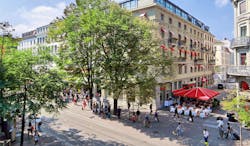
Hotel St Gotthard is a sophisticated 4-star hotel in an excellent central location. Haute cuisine and stylish, comfortable accommodation make this an excellent spot to recuperate after enjoying the cultural delights of Zurich.
Classic double room
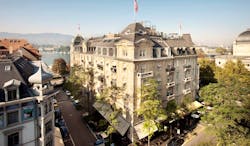
The Romantik Hotel Europe in Zurich is a charming, boutique, family-run hotel with 39 rooms just two minutes’ walk from the shores of Lake Zurich and by the Opera House.
Classic double room
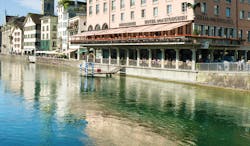
Hotel Storchen is an elegant and refined 5-star boutique hotel in a beautiful waterfront location. Delicious cuisine and luxurious accommodation make this an excellent spot to recuperate after enjoying the cultural and historical delights of Zurich.
Classic double room
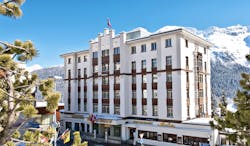
Hotel Schweizerhof St Moritz is a 4-star boutique hotel in a beautiful location on the mountain slopes, and is an excellent base for enjoying the scenery of Grisons and the Engadine. It offers stunning views, gourmet dining and exceptional service.
Double room
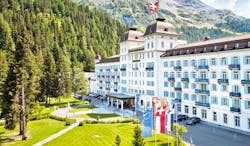
Kempinski Grand Hotel des Bains is a 5-star luxury spa hotel in a beautiful Alpine location. Offering fine dining, extensive spa facilities and impeccably grand accommodation, it is an excellent spot to recuperate after a day on the slopes.
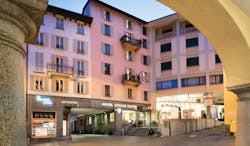
Hotel Lugano Dante is a comfortable, 4-star hotel in the centre of Lugano. This hotel serves as a comfortable and welcoming base from which to explore the town, lake and surrounding rural area.
Quality room
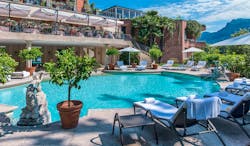
The Villa Principe Leopoldo in Lugano is an elegant, historic hotel set on a hill above the city of Lugano. 37 suites, restaurant, two outdoor pools, winter garden, piano bar, spa.
We felt the views on the Bernina Express were the highlight of the entire trip. We will be sure to use your services again in the future.Mr C, May 2019
Holiday price guide From £1,650 per person based on two people sharing a double room and including for second class rail travel. First class supplement £555 per person.
Holiday Code CHBR01
Call us on 01392 441245
Luxury Swiss iconic rail touring holiday on the Bernina Express
About Ticino
An Expressions tailor-made holiday to Ticino allows travellers to witness the sheer diversity of Switzerland as a country. Hailed as having a Mediterranean climate, Ticino is Switzerland's most southerly region. Italianate towns, influenced by the proximity of the Italian border, provide a wholly different culture and atmosphere to the Bernese Oberland, the Saanenland, and other central and northern regions. A smattering of small lakes mark the upper boundary of Ticino, but it is Lake Maggiore and Lake Lugano that dominate the south, prompting many of the long, straight valleys that lead into Italy. The River Ticino winds its way down from its source on the Ticino border, meeting dams, lakes, and trickling and tumbling waterfalls on its way. Palm trees line the lakesides, medieval Italian castles form the centre-points of towns, and colourful, higgledy-piggledy houses look out across the water or from their tiered position on the steep mountainside. Communities here seem to effortlessly blend the feel of southern coastal towns with the rural authenticity of the mountain villages of central Switzerland.
Highlights of Ticino
Two of the main cities in Ticino lie quite close together in the south of the region: Locarno and Lugano. On the banks of Lake Maggiore, Locarno is rich with cultural treasure. Visit the 17th century Church of St Anthony, the 16th century Church of San Francesco, the mid-17th century New Church, or the late 15th century Sanctuary of the Madonna del Sasso to begin your tour of Locarno's beautiful and historic sites. Perhaps most noteworthy, however, is the Visconti Castle, in which there is a permanent exhibition of Roman glass. On Thursdays a market is held in the centre of the town, which always makes for an excellent place to enjoy Locarno at its liveliest, as well as to pick up a few delicacies. Venture outside Locarno to climb the Cadada Cimetta, from the top of which you can see both the Valais High Alps and Lake Maggiore, the highest and lowest points in Switzerland. Follow the paths of the Magic Valley or the Verzasca Valley to witness the turquoise-green, crystal-clear waters that flow there. For a more leisurely day out, enjoy a boat cruise on Lake Maggiore. As you leave Locarno and head west down the valley towards Italy, you will see the rocky gorges that prove so popular with cliff divers. Eerie tunnels and caverns have been carved out over time, providing ethereal little spots to stop off on your travels.
Cultural highlights of Ticino
East of Locarno is Bellinzona, a town remarkable in that it is the most Italianate town in Switzerland and capital of Ticino. The central medieval castle and its two neighbours are among Switzerland's best preserved, coming together to form a picturesque UNESCO World Heritage Site. The ramparts of the central castle run alongside the vineyards within, with lush grass carpeting the fortified walls. North of Locarno, you will come across Tegna, the site of some interesting prehistoric ruins. Continue along this route towards the Italian border on the Centovalli Express to discover the old wine press in the village of Cavigliano, the museum and cableway in Intragna, the cable car up to the solitary, traffic-free hamlet of Rasa from Verdasio, and finally, across the Italian border to Re, where the stunning, yet imposing, Sanctuary of the Madonna of the Blood stands on the very edge of a dramatic cliff. In eastern Ticino is Biasca, a town where a waterfall cascades down the mountainsides, under bridges and over rocks that have been smoothed by time. Towns and villages such as Airolo, Lavizzara, Acquarossa, Blenio, and Brione all offer alternative views on this beautiful region. Any visit to Ticino is incomplete without a few hours spent in Lugano. Famous for its eponymous lake, San Salvatore Mountain, and Monte Bre, Lugano is a quintessentially ‘Ticino’ town. Take the funicular railway from Casserate as high as possible up Monte Bre to witness the phenomenal panoramas and enjoy the traditional Swiss rail experience.
Festivals in Ticino
As with much of Switzerland, there is a high focus on dairy products in both the regional dishes and their self-identification. To appreciate Swiss dairy products in Ticino, head to Ambri Quinto in the Leventina Valley at the end of September to enjoy the Agriculture and Cheese Fair. The first weekend in October brings with it a celebration of autumn. In Lugano, this autumn festival focuses on local products, folkloric music, and small dramatic shows. In Ascona, the autumn festival celebrates the versatile chestnut, with jams, cakes, cheese dishes, and entertaining concerts. Ascona's unique carnival is celebrated on Mardi Gras on the lake promenade. In Muralto on the second Sunday of March there is a fish festival beside the water, involving a fishing contest, music, games, and food stalls. Beside the smooth rocks of Solduno, on St Joseph's Day in March, the streets are filled with the smell of the speciality Tortelli, a fritter whose recipe is strictly guarded.
Gastronomy in Ticino
The varied and delicious specialities of Ticino may very well be the highlight of your trip, influenced by hearty Swiss cuisine, as well as Italy's Mediterranean flavours. One particular feature of dining here are the ‘grotto' restaurants. Usually housed in picturesque stone farmhouses, with abundant flower boxes, shuttered windows, and vast terraces canopied by views on which customers eat fresh, home-cooked food. Popular so-called ‘slow foods' include farina bona flour, cicitt sausages, Zincarlin cheese and shortbread biscuits. At the heart of many dishes you may come across are polenta and Merlot wine, which can also be sampled at a local winery. Originally cooked in a large cauldron like porridge, polenta is now best served alongside braised beef. Before leaving Switzerland, ensure you sample some of the world-famous fondue.
Call us on 01392 441245
Luxury Swiss iconic rail touring holiday on the Bernina Express
About Valais
An Expressions tailor-made holiday to Valais incorporates the region stretching from the southeastern-most shore of Lake Geneva to its borders with Ticino, Italy, Uri, and Bern. Perhaps most famous for the icy Alpine resort of Zermatt, Valais is a canton that captures a blend of those Swiss mountain resorts and northern Italy's flourishing wine-producing vineyards. This mix is complicated further by the dual-language of the canton; the west of Valais speaks French, and the east speaks German. Terraced vineyards cloak the slopes of southern Valais, uniquely watered by glacier run-off, channelled through ‘bisses,' which are historic irrigation channels. The various and diverse ‘terroirs’ have led to the cultivation of a great number of grape types. Older varieties, such as Amigne, Petite Arvine, and Cornalin, are still carefully grown alongside more robust varieties, such as Chasselas, Gamay, and Pinot. Valais is also popular amongst cycling, mountain-biking, and hiking enthusiasts. Over 8000km of marked hiking paths line the mountainsides, and well-maintained and well-marked cycling paths are combined with high-altitudes to establish a network that is unrivalled in Switzerland. Cycle from mountain to mountain, passing thrashing rivers, trickling streams, tranquil lakes, and thick forests to gather, in just a few hours, a vast perspective on Swiss natural beauty.
Highlights of Valais
During your stay in Valais, you will see lush meadows, rivers, and 4000m high mountain peaks topped with all-year ski slopes. Between these peaks, creaking, radiant-white glaciers mould to the gradients of the slopes and filter into the craggy valleys. The most famous mountain in Valais, and possibly the whole of Switzerland, is undoubtedly the Matterhorn. Its distinctive silhouette can be appreciated from miles around, but perhaps best from Zermatt. Take the Matterhorn Glacier Paradise cable car from Zermatt up to 3883m, making it the highest cable car in Europe, to the Panoramic Platform to look out across the other neighbouring 4000m high mountains and glaciers. Before returning to ground level, admire the mesmerising ice sculptures hidden within the Glacier Palace, a series of stunningly carved ice tunnels. Zermatt is an Alpine village known for its winter sports, being as it is one of the most popular skiing destinations in Switzerland. In the summer, when some of the snow has melted, Zermatt is a peaceful community of chic bars and cafes and quaint and characterful chalets. It comes highly recommended to those who enjoy hiking, walking, or simply the sight of those dramatic Alpine panoramas outside your hotel window. Those looking to experience the undisrupted beauty of the landscape but without the strenuous exercise of the hiking routes may wish to take advantage of the excellent local railways and connections. The Gornergratbahn, for example, is Europe's highest cogwheel railway, and its characteristic red carriages take visitors up to stunning Gornergrat. From Zermatt you can also board the Glacier Express to St Moritz in Grisons, which is a continually popular and iconic route. In the north of the Canton of Valais is the Aletsch Glacier, the longest in the European Alps and with the greatest volume. Reaching from the Bernese Oberland to the Rhone River, this UNESCO World Heritage Site is a vast expanse of twisted, mottled ice which navigates sharp spikes of rock and thick clusters of pine forest. Between Bettmeralp and Riederalp, to the southeast of the Aletsch Glacier, is the Aletschji-Grunsee Suspension Bridge. Over 124m of thrilling high-altitude metal bridge hovers above the Massa Gorge, affording the brave and adventurous among us phenomenal, unparalleled views of the glacier. Northwest of Zermatt, towards Martigny, is Verbier, a luxurious ski resort known for attracting very elite clients. If you have the chance, it is worth spending a night here so as to take the first Medran cable car up to the summit of Mont Fort at 3329m to see the sun rise over the mountaintops. At Saas Fee, the Mittelallin funicular railway climbs underground to 3500m, where a revolving restaurant looks out across the Allalin Glacier and others that sit at 4000m.
Cultural highlights of Valais
Sion, in the northern half of Valais, is home to chateaux and palaces galore. Chateau de Tourbillon has a magnificent hilltop position looking down over the Rhone Valley. After a fire in the 18th century, mainly the brooding exterior walls remain, though the site offers a breath-taking, intriguing place for a walk. Opposite the Chateau de Tourbillon, on an equally majestic hill, is the Chateau de Valere. Originally started in the 11th century, the castle was built around an ancient basilica. Today, the castle church holds carved stalls, an apse with beautiful frescoes, and the oldest playable organ in the world, which dates from 1440. While visiting, take a tour around the castle museum, and, in the summer, enjoy one of the concerts held here. Another small castle in Sion houses the Musee d'Art, exhibiting works by artists such as Oskar Kokoschka, Caspar Wolf, and Ernest Bieler. For even more prestigious art collections, visit the Fondation Pierre Gianadda in Martigny, which houses works by the likes of Van Gogh and Picasso, and the Fondation Pierre Arnaud, which is a strikingly modern building with a mirrored exterior and a dramatic mountainous location in Crans Montana.
Festivals in Valais
Popular destinations and cultural cities lend themselves to high profile celebrations and festivals, which crop up around Valais at various points in the year. In Sierre, the Marche des Cepages in early September sees residents and visitors walk through the vineyards around the town, while drinking the produce and socialising with the winegrowers themselves. From the middle of August to the middle of September, the Festival de Sion sees international classical artists perform at many local stages, violinists compete, and many smaller free-entry stages pop up. Two weeks at the end of July see Verbier truly live up to its sophisticated reputation with a classical music festival. During the summer months at the Chateau de Valere in Sion, in the evening the castle walls are lit up with colour as part of the fascinating sound-and-light show. Something more unique is the Foire au Lard in Martigny, otherwise known as the Bacon Fair. Held in December, this festival has been around since 1801. In Riederalp, an unusual but very traditional festival takes place, the Chuefladefascht. Local residents throughout history would smash up cow pats and spread it as fertiliser across their fields; now, the game is to strike as many with your weapon of choice as possible and pluck out tombola prizes written down on paper and hidden inside.
Gastronomy in Valais
Valais the largest wine-making region in Switzerland, with plenty of wineries and vineyards open for tastings and tours. Other speciality ingredients include the huge range of savoury spices that grow here, including saffron. These local spices ensure that every dish in Valais' many gourmet restaurants will be seasoned and spiced to perfection. As with much of Switzerland, a very popular dish is the raclette, made using the best Alpine cheeses. For a heartier, homelier meal, seek out a dish that utilises the rich flavour of the local chestnuts, or choose to begin your meal with some fresh rye bread.
Call us on 01392 441245
Luxury Swiss iconic rail touring holiday on the Bernina Express
About Zurich
Zurich is a city that adapts to and flourishes in every season. In the summer, it is a cosmopolitan haven of designer boutiques, riverside pavement cafes, 50 museums, and over 100 galleries; and, in the winter, the streets of grand townhouses, churches, and palaces are transformed into a veritable winter wonderland. Step outside the city and you are immediately cast back into rural, Alpine Switzerland as the landscape becomes more dramatic and Lake Zurich dominates the plethora of natural interest sites. Towns such as Winterthur and Uster are home to their own range of traditions and their own character, with architecture and cuisine that reflects both the proximity of the German border and a proud Swiss national identity. With such close proximity to Zurich airport and the major railway lines, Zurich is an excellent first or last stop on a touring holiday.
Highlights of Zurich
The capital of the German-speaking canton of Zurich is the internationally-renowned historic city of Zurich. The perfect place to acclimatise to the Swiss way of life, there is much cultural discovery to be done. Perhaps begin with the waters of Lake Zurich and the River Limmat, taking a scenic boat cruise, or hiring a dingy for a more hands-on approach. Pedal boats offer a happy medium, and the lakefront Badi-Bars are beautifully situated for an evening drink afterwards. To witness the beauty of the city from above, climb to the top of the Karlsturm, one of the Grossmunster Church's two iconic towers. On the banks of the River Limmat is Schipfe, Zurich's oldest district. It was once the headquarters of the silk industry, and home to many tranquil bathhouses and the workshops of boat-builders; now, however, it has a very serene atmosphere that attracts artisans as well as visitors looking for peaceful strolls down quaint streets. The Lindenhof District was the site of a Roman fort in the 4th century, and Charlemagne's grandson's palace in the 9th century. Today, it is a popular meeting place for Zurich's residents. For a sweeping view of Zurich's Old Town, walk along the promenade in the Niederdorf District. Here, shops are hidden down narrow alleyways, old-fashioned grocery stores sell the local produce, and the views of grand stone buildings are topped off by the Grossmunster's towers. Everywhere in Zurich, however, there are pockets of outstanding beauty, be it beside the 1,200 fountains of drinkable water, on the historic Little Red Train, or Polybahn, that takes you up to the Polyterrasse, or on the world's most luxurious shopping mile, the Bahnhofstrasse.
Cultural highlights of Zurich
Informative cultural experiences can be had at a number of locations around the city. The Kunsthaus Art Museum exhibits a range of permanent and temporary displays by artists of international and local acclaim. The Museum Rietberg exhibits a range of non-European artistic and cult objects. The Arthouse Cinemas are known throughout Europe for the rare opportunity they provide to view independent films in a cinema setting. For innovative modern art, visit the Migros Museum or the Kunsthalle at Lauenbrau-Areal. More unique artistic ventures can be found at the Bruno Weber Park and Cabaret Voltaire, the birthplace of Dadaism. The so-called ‘Home Mountain,' or Uetliberg, is beautifully quilted in rich, dense forest and looks out across the city rooftops below and the blue waters of Lake Zurich. The Uetliberg Railway takes you up to the top of the mountain in no time at all, or it is possible to walk to the summit in less than two hours. Venturing outside the city, you may want to spend a day enjoying the natural scenery. At Rapperswil on Lake Zurich you can step out to the lake's centre to take in the 360 degree panoramic views. Also only a short distance away by rail is the majestic Rhine Falls, the largest plain waterfall in Europe. Stretching 150m across, the sight of the tumbling, crashing water is fantastic and well-worth the train ride. Kyburg Castle, once the home of the Counts of Kyburg and then the Habsburgs, is a magnificent and eerie insight into medieval life, torture, food, and the illustrious heritage of the area. An unseal, irregular pentagon, the castle fits perfectly onto the small hill on which it sits, cradling a picturesque courtyard. At night, the stone walls and square-pyramidal roofs are atmospherically lit from the ground with golden light. The museum housed within introduces visitors to everything medieval, from military fashion to the produce of the authentic vegetable garden. The city of Winterthur, though considerably smaller than Zurich, will be a highlight of your trip. Besides its 17 museums, including the Oskar Reinhart ‘Am Romerholz’ collection of 14th to 20th century art, Winterthur has the largest pedestrianised Old Town in Switzerland. Mansions line the petite squares, and the City Church with its red-topped towers and the Fisher Maiden's Fountain give it exceptional character. The Town Hall Passage remains a famous and popular attraction. Winterthur is also home to a prestigious Centre for Photography, a Casino Theatre, and the Swiss Science Centre Technorama. To end your day in Winterthur, or your stay in the Zurich Region, locate your favourite of the garden city's parks to sit back and enjoy the late afternoon sun.
Festivals in Zurich
In Zurich, the festivals and cultural events generally celebrate modern, artistic accomplishments, spotlighting international, not just local, stars. The Zurich Film Festival, for example, runs from the 22 September to the 2 October, and the Zurcher Theater Spektakel runs from August 13 to September 4. Winterthur plays host to the International Short Film Festival, the Winterthurer Musikfestwochen, and the Afro-Pfingsten. One alternative festival is the Dorflifascht in the Niededorf District at the end of August, when music, markets, food stalls, and shows take over the streets and squares. The Food Zurich festival will be held annually at the end of September, as of 2016, featuring fine, gourmet food sold at stalls by local restaurants and producers. Each year, the Manifesta takes on popular cultural and political issues, and deals with them through art over a period of up to 100 days.
Gastronomy in Zurich
The cuisine in Zurich is very typically Swiss, meaning that trying the chocolate, particularly by Lindt, Laderach, and Vollenweider is a must, along with the Luxemburgerli macaroons. A key dish in Zurich is the Zurcher Geschnetzeltes, a veal and mushroom ragout with kidney and sweetbreads that originated in the city. Rosti, fondue, and raclette remain popular this far northeast, as does the traditional Stubli. For a very traditional Swiss meal, head out to Rapperswil one evening. On your travels through Zurich, however, you will also come across a number of innovative restaurants serving creative cuisine, such as classic Swiss dishes using meat substitutes such as Tofu, or in unusual locations, such as the interior of an old mill.

